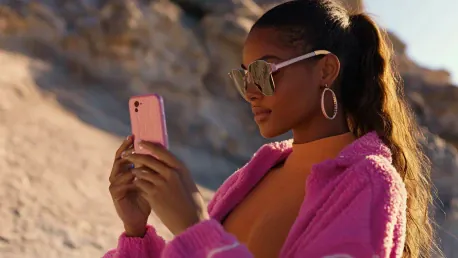The potential ban of TikTok in the United States has sent shockwaves through the marketing and influencer communities. As one of the most popular social media platforms, TikTok has become a cornerstone for many brands and content creators. The looming threat of its shutdown raises critical questions about the future of digital marketing strategies and the adaptability of those who have heavily relied on the app. The uncertainty has led many to ponder how they will continue their engagement campaigns and what the alternate strategies could be to safeguard their businesses.
The Legal Battle and Its Implications
TikTok’s struggle to remain operational in the US has been a tumultuous journey. The platform’s Chinese parent company, ByteDance, has faced intense scrutiny over data privacy concerns, leading to legal battles and executive orders demanding the divestment of TikTok’s US assets. The uncertainty surrounding the app’s future has left marketers and influencers in a state of limbo, unsure of whether to continue investing in the platform or to start exploring alternatives. The apprehension is not unfounded as any interruption could disrupt months of planning and engagement with audiences.
The incoming administration or a Supreme Court ruling could potentially delay the ban, offering a temporary reprieve. However, the long-term outlook remains uncertain, and the possibility of a complete shutdown cannot be ignored. This legal tug-of-war has significant implications for the digital marketing landscape, forcing stakeholders to reconsider their strategies and prepare for potential disruptions. Businesses are left grappling with how to effectively and promptly pivot their strategies while ensuring continuous engagement with their target audiences.
Impact on Marketers and Influencers
For marketers and influencers, the potential TikTok ban is more than just an inconvenience; it represents a major upheaval in their social media strategies. Many have built substantial followings and engagement on the platform, leveraging its unique algorithm to reach a wide audience. The loss of TikTok would mean losing a valuable tool for brand promotion and audience interaction. This sudden void requires immediate redress to maintain the momentum they have built over time on TikTok.
The immediate challenge for marketers and influencers is to pivot to other platforms to maintain their audience engagement. Instagram Reels and YouTube Shorts have emerged as viable alternatives, offering similar short-form video content. However, these platforms come with their own set of challenges, including different algorithms and user behaviors that require a tailored approach. This necessitates not only transferring content but also understanding the dynamics and nuances of these alternate platforms to continue captivating their audience effectively.
Diversifying Social Media Strategies
The potential TikTok ban underscores the importance of diversifying social media strategies. Relying on a single platform for audience engagement is risky, as evidenced by the current situation. Marketers and influencers must explore omnichannel strategies, ensuring a presence on multiple platforms to mitigate the impact of losing any one app. This means diversifying both the content strategy and the engagement methodology to cover broader online visibility.
This shift toward a multi-platform presence involves reallocating budgets and efforts toward platforms where TikTok’s audience might migrate. While Instagram Reels and YouTube Shorts are the most obvious choices, smaller and emerging platforms like Triller and Clapper also present opportunities for growth. The key is to be nimble and experimental, adapting content to fit the unique characteristics of each platform. Introducing a larger social footprint can hedge against the instability of relying on a single platform, ensuring continuous engagement despite platform-specific disruptions.
The Role of Alternative Platforms
In the absence of TikTok, alternative platforms will play a crucial role in filling the void. Instagram Reels and YouTube Shorts are well-positioned to capture the displaced audience, but they are not without their challenges. Both platforms need to enhance their features and algorithms to match TikTok’s user experience and engagement levels. This can mean rapid development and deployment of new features to augment user satisfaction and retain engagement.
Smaller platforms like Triller and Clapper could also see a surge in users, offering marketers and influencers new avenues for content creation and audience engagement. These platforms provide an opportunity to reach niche audiences and experiment with different content formats. However, building a substantial following on these lesser-known apps will require time and effort. The challenge lies in not only attracting the audience but also keeping them engaged consistently, which involves understanding new platform dynamics and adapting quickly.
Preparing for the Worst-Case Scenario
With the potential TikTok ban looming, marketers and influencers must prepare for the worst-case scenario. This involves backing up all TikTok content, analytics, and ad data to ensure that valuable information is not lost. Additionally, it is crucial to repurpose existing content for other platforms, maintaining consistency in brand messaging and audience engagement. The need for a proactive approach to managing digital assets and data becomes paramount to overcome such an unprecedented scenario.
Strategic planning is essential to navigate the potential disruption. Marketers should develop contingency plans that outline steps to take in the event of a TikTok shutdown. This includes identifying key platforms for migration, reallocating budgets, and adjusting content strategies to fit the new platforms’ algorithms and user behaviors. Setting up immediate actionable plans can help cushion the impact of the sudden discontinuation and ensure a seamless transition to new platforms, thus aiding in maintaining the established audience base.
The Future of Digital Marketing
The potential ban of TikTok in the United States has caused significant distress in the marketing and influencer spheres. With its vast popularity, TikTok has become a fundamental platform for numerous brands and content creators. The threat of its possible shutdown has sparked serious concerns about the future of digital marketing strategies. Those who have heavily depended on the app are now facing substantial uncertainty, prompting them to reconsider their ongoing engagement campaigns and explore alternative strategies to protect their business interests.
The marketing community is now forced to contemplate how to sustain their outreach and engagement in the absence of TikTok. Many are deliberating on diversification, such as tapping into other platforms like Instagram Reels, YouTube Shorts, and emerging social media networks, while also considering more traditional digital spaces. They aim to establish a more robust and resilient online presence to mitigate the impact of losing such an important platform.
Additionally, content creators are strategizing ways to engage their audiences directly through newsletters, blogs, and podcasts, ensuring they have multiple touchpoints to maintain their influence. This uncertain time is testing the adaptability and creativity of brands and influencers alike, pushing them to innovate and diversify their approaches to stay relevant in an ever-changing digital landscape.









